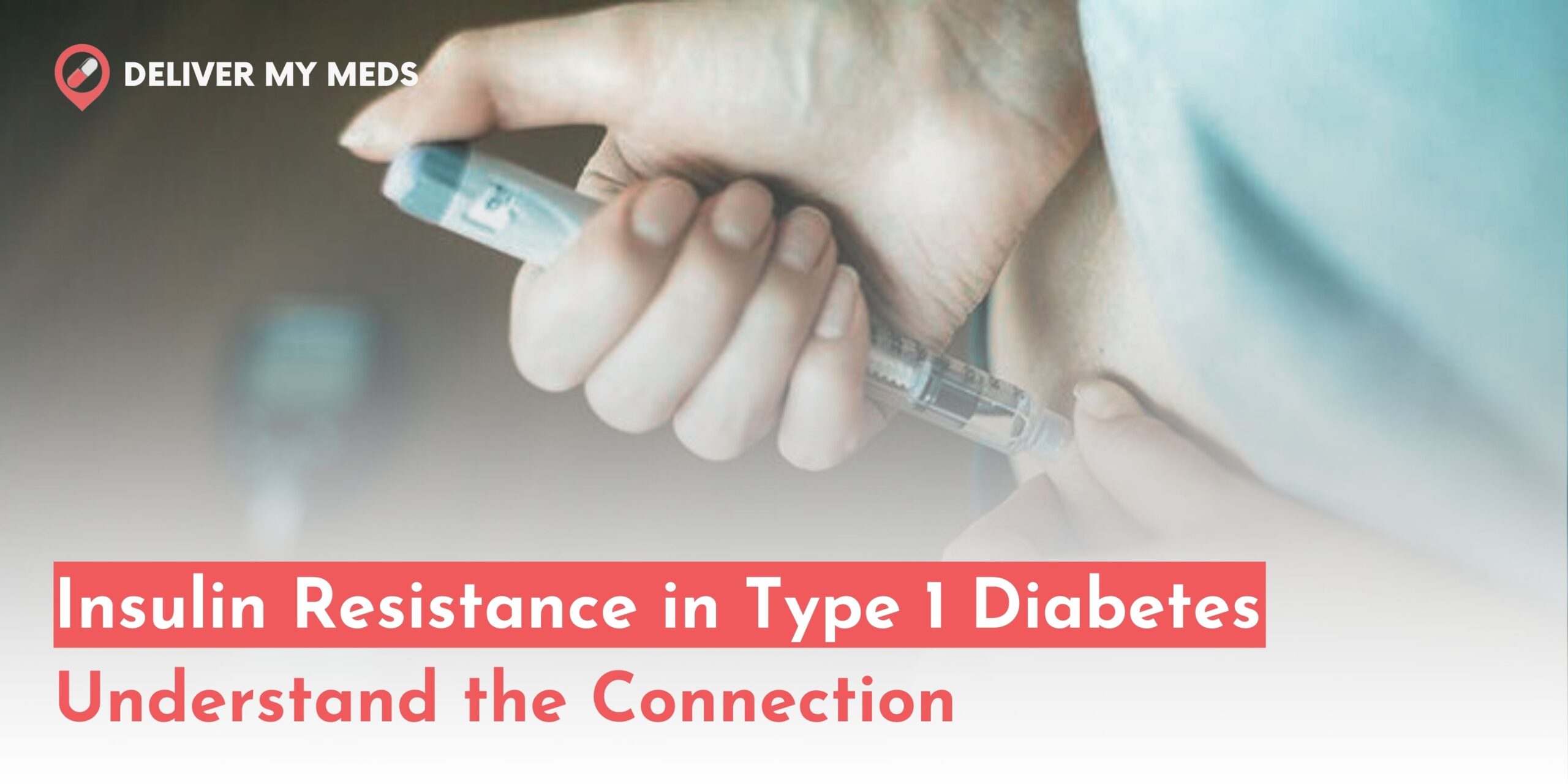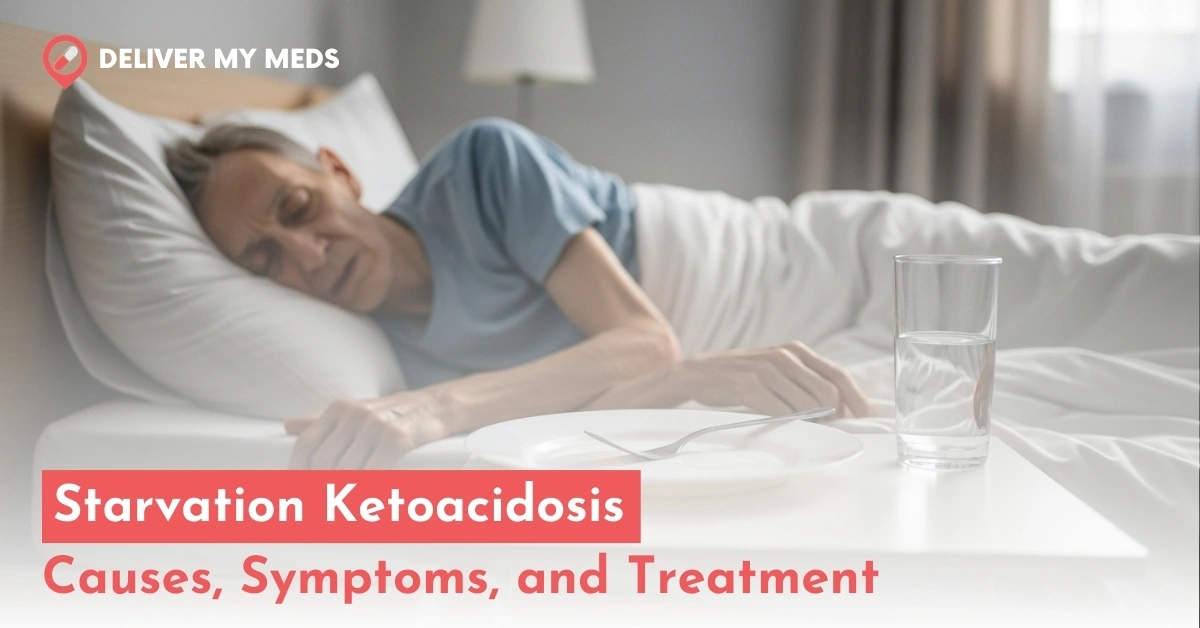
Insulin resistance is typically related to type 2 diabetes, but it can also be observed in people who have Type 1 Diabetes (T1D). Although the pathophysiology behind diabetes resistance caused by insulin in T1D differs from that in type 2 diabetes, its effects can be similarly devastating. Knowing the process of developing insulin resistance in type 1 diabetes, how it causes symptoms, and how it can be managed will improve general health and the management of diabetes.
What is Insulin Resistance?
Let’s look at the definition of insulin resistance before proceeding to the issue of insulin resistance in type 1 diabetes. Insulin is a hormone released by the pancreas, which aids in regulating blood sugar levels by allowing cells to take in glucose to provide energy. Insulin resistance happens when the cells of the body cannot respond to insulin as they are expected to. Ultimately, the pancreas releases more insulin to get the same result. This can lead to high concentrations of blood sugar, and eventually, if not controlled, it can lead to the development of diabetes.
In the case of type 1 diabetes, the issue isn’t insulin resistance but insulin production. In T1D, the immune system misidentifies and kills the beta cells responsible for generating insulin inside the pancreas, resulting in a lack of insulin production. Patients with T1D must inject insulin to control blood glucose. The insulin resistance in T1D is still possible, but it makes regulating blood sugar more difficult.
How Does Insulin Resistance Arise in Type 1 Diabetes?
When it comes to type 1 diabetes, insulin resistance is also due to a variety of causes that are related to the disease itself, as well as external factors such as weight, lifestyle, and other ailments.
1. Chronic Hyperglycemia
Regularly high blood sugar levels for people with type 1 diabetes could eventually cause them to become insulin-resistant. If you have high blood sugar for an extended period, cells eventually lose their sensitivity to insulin. This is referred to as “glucose toxicity,” and it makes it harder to regulate blood sugar.
2. Obesity and Physical Inactivity
Like type 2 diabetes, physical inactivity and weight gain are significant factors that can lead to insulin resistance in type 1 diabetes. Visceral fat and obese bodies produce cytokines and hormones that can interfere with insulin signaling, reducing the efficiency of insulin in the body.
3. Inflammation
Chronic inflammation, such as that often seen in diabetes, can also trigger insulin resistance. Inflammation affects the functioning of insulin receptors and decreases the capacity of cells to recognize insulin, resulting in consequent difficulties in controlling insulin levels in the blood.
4. Insulin Therapy
Over time, type 1 diabetics require more insulin due to insulin resistance. It is interesting to note that treatment can, in certain instances, increase insulin resistance. The use of high doses of insulin, especially when combined with overweight or poor lifestyles, can cause resistance.
5. Hormonal Changes and Stress
Cortisol, a stress hormone, could also cause insulin resistance. Stress from physical causes (e.g., disease) and emotional stress may raise cortisol levels, further hindering insulin’s action.
6. Genetics and Metabolic Factors
People living with Type 1 diabetes may be predisposed genetically to insulin resistance. Furthermore, other factors, such as high triglyceride levels and low HDL cholesterol levels, could trigger insulin resistance.
Signs of Insulin Resistance in Type 1 Diabetes
The signs and symptoms of insulin resistance T1D might not be noticed and could overlap with the usual symptoms of diabetes. Be aware of these symptoms:
- Increased insulin requirements: If you notice that your insulin doses continue to increase to manage your blood sugar levels, it could be an indication of insulin resistance.
- Increased blood sugar levels: Even if you’re typically receiving insulin, your blood glucose level will always be higher, particularly after meals.
- Hunger and weakness: are caused by the body’s attempt to digest glucose. You may feel hungry or have a stronger sensation of hunger despite having food.
- Resistance to weight loss: The hormone insulin resistance can be the reason for weight gain and resistance to weight loss, especially in type 1 diabetes.
- Skin changes: Darkened or swollen skin, especially on the neck or the armpits (acanthosis nigricans), is an indication of insulin resistance.
Managing Insulin Resistance in Type 1 Diabetes
Controlling the issue of insulin resistance among people with type 1 diabetes calls for a complete strategy to tackle the management of blood glucose and overall health. The most effective ways to control insulin resistance include:
1. Optimize Insulin Therapy
It is crucial to maximize your insulin treatment under the supervision of a medical doctor. This includes adjusting the dose of insulin, experimenting with alternative insulin preparations, or utilizing the insulin pump or continuous glucose monitors (CGMs) to increase the monitoring and adjustment of insulin administration.
2. Exercise Regularly
Physical activity is among the most efficient methods of increasing insulin sensitivity. Exercise allows muscles to use glucose, reduces fat, and aids in weight management. Strength training and aerobic exercise are both beneficial for type 1 diabetics.
3. Healthy Diet
A diet of whole foods, healthy fats, lean protein, and carbohydrates that are low in glycemic index can aid in controlling blood sugar levels and increase insulin sensitivity. The restriction of sugary foods and carbohydrate consumption should be avoided in particular.
4. Healthy Weight
If obesity is the reason for diabetes resistance, weight reduction may actually boost insulin sensitivity. Do not lose weight quickly, as it could destabilize blood glucose levels. Instead, opt for a slow, steady weight loss program.
5. Manage Stress
Stress can cause insulin resistance. Stress management techniques like mindfulness, yoga, deep breathing, meditation, or therapy can reduce cortisol levels and overall insulin sensitivities.
6. Monitor Blood Sugar Tightly
Monitoring blood glucose levels every day is essential to detect any changes and adjust insulin dosages accordingly. Continuous glucose monitors (CGMs) could give live data that regulates both blood sugar levels and insulin resistance.
7. Insulin Resistance Drugs
In certain instances, medicines that make the body vulnerable to insulin, like metformin (used to treat type 2 diabetes), are a possible option. This could decrease the levels of insulin needed and help control blood sugar. This is only done on the advice of a medical professional.
8. Regular check-ups with healthcare providers
Regular monitoring to your healthcare provider’s team—a group consisting of dietitians, endocrinologists, and diabetes educators—is essential to effectively managing the effects of insulin resistance. They can track improvements in your treatment regimen, make changes to it, and offer valuable assistance.
Conclusion
Insulin resistance is a crucial yet often neglected condition in people suffering from type 1 diabetes. It can affect the management of blood glucose, but with proactive measures, its effects can be reduced. By focusing on maximizing insulin treatment, making healthy lifestyle changes, and keeping up-to-date with new treatment options, people with T1D are able to manage their resistance to insulin and have greater overall health.
Suppose you or someone close to you is showing signs of resistance to insulin. In that case, it’s suggested that you consult a healthcare specialist with experience in managing diabetes to create an individual treatment program.\



